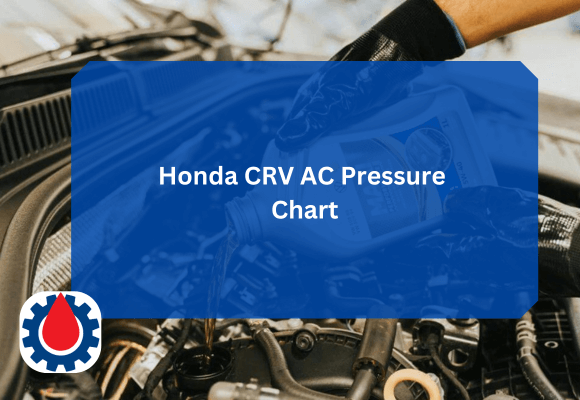If you’ve ever owned a chainsaw, weed trimmer, or small outboard motor, you’ve likely dealt with a 2-cycle engine. Unlike 4-stroke engines, which have a separate oil reservoir, 2-stroke engines require oil to be mixed directly into the gasoline.
This is where the 2 cycle engine oil mix chart becomes a vital tool. Mixing the correct ratio of oil and fuel is essential for maintaining engine performance and extending the life of your equipment.
In this post, I will break down everything you need to know about the 2 cycle engine oil mix chart, from understanding ratio numbers to mixing fuel like a pro. Let’s jump in.
2 Cycle Engine Oil Mix Chart
Here are the most frequently used ratios:
| Ratio | Gasoline (US Gallons) | Oil (Fluid Ounces) |
|---|---|---|
| 50:1 | 1 | 2.6 oz |
| 40:1 | 1 | 3.2 oz |
| 32:1 | 1 | 4.0 oz |
| 25:1 | 1 | 5.1 oz |
Use Our 2-Cycle Calculator: 2-Cycle Oil Calculator
Full 2 Cycle Fuel-to-Oil Mix Chart
| Fuel-to-Oil Ratio | 1 Gal (128 oz) | 2 Gal (256 oz) | 2.5 Gal (320 oz) | 5 Gal (640 oz) |
|---|---|---|---|---|
| 16:1 | 8.0 oz | 16.0 oz | 20.0 oz | 40.0 oz |
| 20:1 | 6.4 oz | 12.8 oz | 16.0 oz | 32.0 oz |
| 24:1 | 5.3 oz | 10.7 oz | 13.3 oz | 26.7 oz |
| 32:1 | 4.0 oz | 8.0 oz | 10.0 oz | 20.0 oz |
| 40:1 | 3.2 oz | 6.4 oz | 8.0 oz | 16.0 oz |
| 50:1 | 2.6 oz | 5.1 oz | 6.4 oz | 12.8 oz |
| 60:1 | 2.1 oz | 4.3 oz | 5.3 oz | 10.7 oz |
| 80:1 | 1.6 oz | 3.2 oz | 4.0 oz | 8.0 oz |
| 100:1 | 1.3 oz | 2.6 oz | 3.2 oz | 6.4 oz |
Related Universal 2 Cycle Engine Oil(Top 3 Best 2025)
Best Engine Oil For 2 Cycle Engines
1. Husqvarna XP+ 2 Stroke Oil
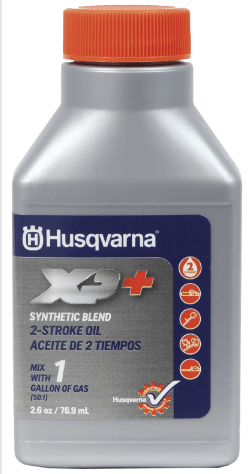
Premium synthetic oil formulated for professional-grade 2-cycle equipment, ensuring cleaner engine operation and longer life.
- Full synthetic formula for optimal lubrication
- Low smoke and reduced exhaust emissions
- Ideal for high-performance engines
2. Lucas Oil Semi-Synthetic 2-Cycle Oil
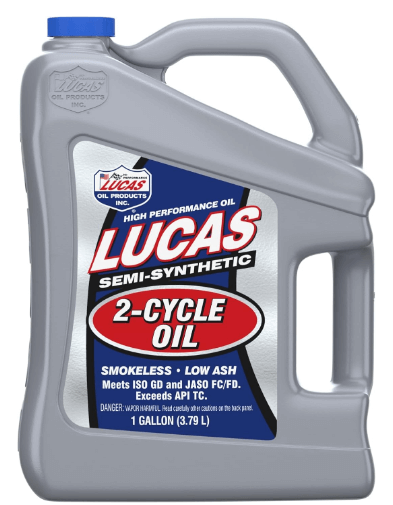
A versatile semi-synthetic oil that works with a variety of air- and water-cooled 2-cycle engines, offering strong wear protection.
- Semi-synthetic for a balance of performance and affordability
- Reduces carbon buildup in engines
- Suitable for premix or oil-injection systems
3. Pennzoil Marine XLF 2-Cycle Oil
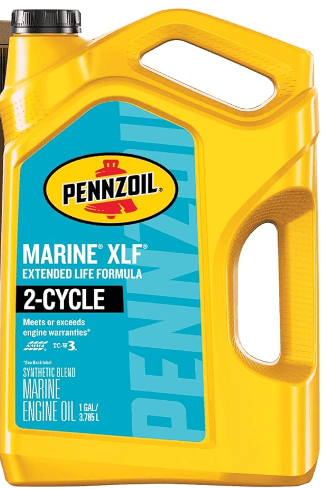
Specially formulated for water-cooled 2-cycle engines, providing excellent protection in marine environments.
- Helps prevent piston and cylinder scuffing
- Protects against rust and corrosion
- Meets NMMA TC-W3 standards for marine engines
4. STIHL HP Ultra 2-Cycle Engine Oil
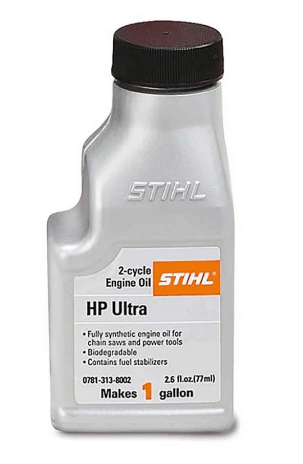
A fully synthetic oil that provides excellent wear protection, keeping engines cleaner and extending service life.
- Fully synthetic, biodegradable formula
- Exceptional protection against piston scuffing
- Designed for high-performance tools
5. Echo Power Blend XTended Life Premium 2-Stroke Oil
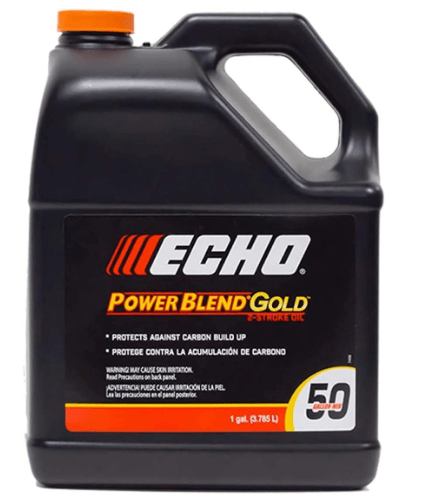
A high-quality synthetic blend designed for air-cooled 2-cycle engines, offering excellent lubrication and reduced smoke.
- Synthetic blend for superior engine protection
- Reduces carbon deposits and smoke
- Works well with a variety of fuel mixes
What Is a 2 Cycle Engine Oil Mix Chart?
A 2 cycle engine oil mix chart is a reference tool that shows the proper ratio of gasoline to oil needed for different 2-stroke engines. It ensures you’re mixing the right amount of oil with your fuel to keep the engine lubricated without flooding or damaging internal components.
For example, a common ratio is 50:1, which means 50 parts gasoline to 1 part oil. That would translate to 2.6 ounces of oil per 1 gallon of gas.
How to Read and Use the Mix Chart
Reading a 2 cycle oil mix chart is straightforward once you understand the format. Most charts are laid out with fuel amounts on one side and show the corresponding oil quantity needed. Here’s how you can use it:
- Determine the required ratio from your owner’s manual.
- Find your gas quantity (1 gallon, 2 gallons, etc.).
- Match it to the oil amount in ounces on the chart.
- Measure and mix: Use a measuring cup or oil bottle with markings for precise measurement.
This eliminates any guesswork and helps ensure a clean, efficient engine run.
Related Engine Oil Compatibility Chart(A Detailed Guide)
Types of 2-Cycle Engine Oils
Not all 2-cycle oils are created equal. Choosing the right type is as important as getting the ratio right. Here are the main categories:
- Standard 2-Cycle Oil: Ideal for lawn tools and smaller engines.
- Synthetic Oil: Offers cleaner burning and better protection. Recommended for high-performance engines.
- Marine 2-Stroke Oil (TC-W3): Specifically designed for water-cooled engines like outboards.
Make sure to use oil that’s labeled for 2-stroke engines only.
Related Can You Mix Different Weights of Oil(Hack or a Disaster)
Mixing Tips for Best Results
Here are some quick tips to ensure your oil-gas mix is spot-on:
- Always mix in a clean gas can, not directly in the engine tank.
- Add oil before gasoline to help it blend better.
- Shake the can thoroughly after adding both components.
- Use fresh fuel—gasoline older than 30 days can degrade engine performance.
- Label your mix clearly to avoid confusion later.
Pro Tip: Use a pre-marked oil bottle or mixing container for even more accuracy.
Related Diesel Engine Oil Temperature Chart(Comprehensive Guide)
What Happens If the Ratio is Wrong?
Using the wrong mix ratio can cause a range of problems, including:
- Too much oil: Leads to heavy smoke, carbon buildup, and fouled spark plugs.
- Too little oil: Causes overheating, premature wear, and even engine seizure.
In short, being off by even a small margin consistently can shorten your engine’s lifespan.
Equipment That Requires 2 Cycle Oil Mix
You’ll commonly use the 2 cycle engine oil mix chart for tools and machines like:
- Chainsaws
- Leaf blowers
- Grass trimmers
- Snowmobiles
- Outboard boat motors
- Dirt bikes
Some newer models use premixed fuel or oil-injected systems, so double-check before mixing.
Environmentally Friendly Considerations
Modern synthetic 2-cycle oils burn cleaner and produce fewer emissions. Some even come with biodegradable formulas. Using the correct ratio not only protects your engine but also minimizes air pollution.
If you use tools frequently, opt for high-quality, eco-friendly oils and avoid over-oiling, which leads to unnecessary pollution.
Related Diesel Engine Oil Grades Chart(Ultimate Guide)
FAQ
What is the ratio for 2 cycle oil mix?
The most common 2-cycle oil mix ratios are:
- 50:1 – 50 parts gasoline to 1 part oil (most modern tools)
- 40:1 – 40 parts gasoline to 1 part oil (older tools)
- 32:1 or 25:1 – used for high-performance or vintage engines
Always check your equipment’s user manual for the recommended ratio.
How much 2-stroke oil for 4 litres?
For a 50:1 ratio (most common):
- Oil needed for 4 litres of petrol = 80 ml
How much 2-stroke oil to 5 litre petrol?
Again, for a 50:1 mix:
- Oil needed for 5 litres of petrol = 100 ml
For other ratios:
- 40:1 = 125 ml
- 32:1 = 156 ml
- 25:1 = 200 ml
How to mix 50 to 1 ratio in litres?
To mix a 50:1 fuel-to-oil ratio, use this simple method:
| Petrol (L) | Oil (ml) |
|---|---|
| 1 litre | 20 ml |
| 2 litres | 40 ml |
| 3 litres | 60 ml |
| 4 litres | 80 ml |
| 5 litres | 100 ml |
Steps:
- Pour the correct amount of oil into your petrol container.
- Add petrol up to the desired level.
- Shake well to mix thoroughly.
How much oil for 50 to 1 mix calculator?
Use this formula:
Oil (ml) = Petrol (litres) × 1000 ÷ 50
Here’s a quick reference:
| Litres of Petrol | Oil Needed (ml) |
|---|---|
| 1 | 20 |
| 2 | 40 |
| 3 | 60 |
| 4 | 80 |
| 5 | 100 |
| 10 | 200 |
Final word
The 2 cycle engine oil mix chart might seem simple, but it plays a crucial role in keeping your 2-stroke equipment in peak condition. By sticking to the recommended ratios, using high-quality oil, and mixing carefully, you’ll enjoy reliable starts, smooth operation, and a longer engine life.
If you care about performance and durability, take a few extra minutes to mix it right, it’s well worth it.




